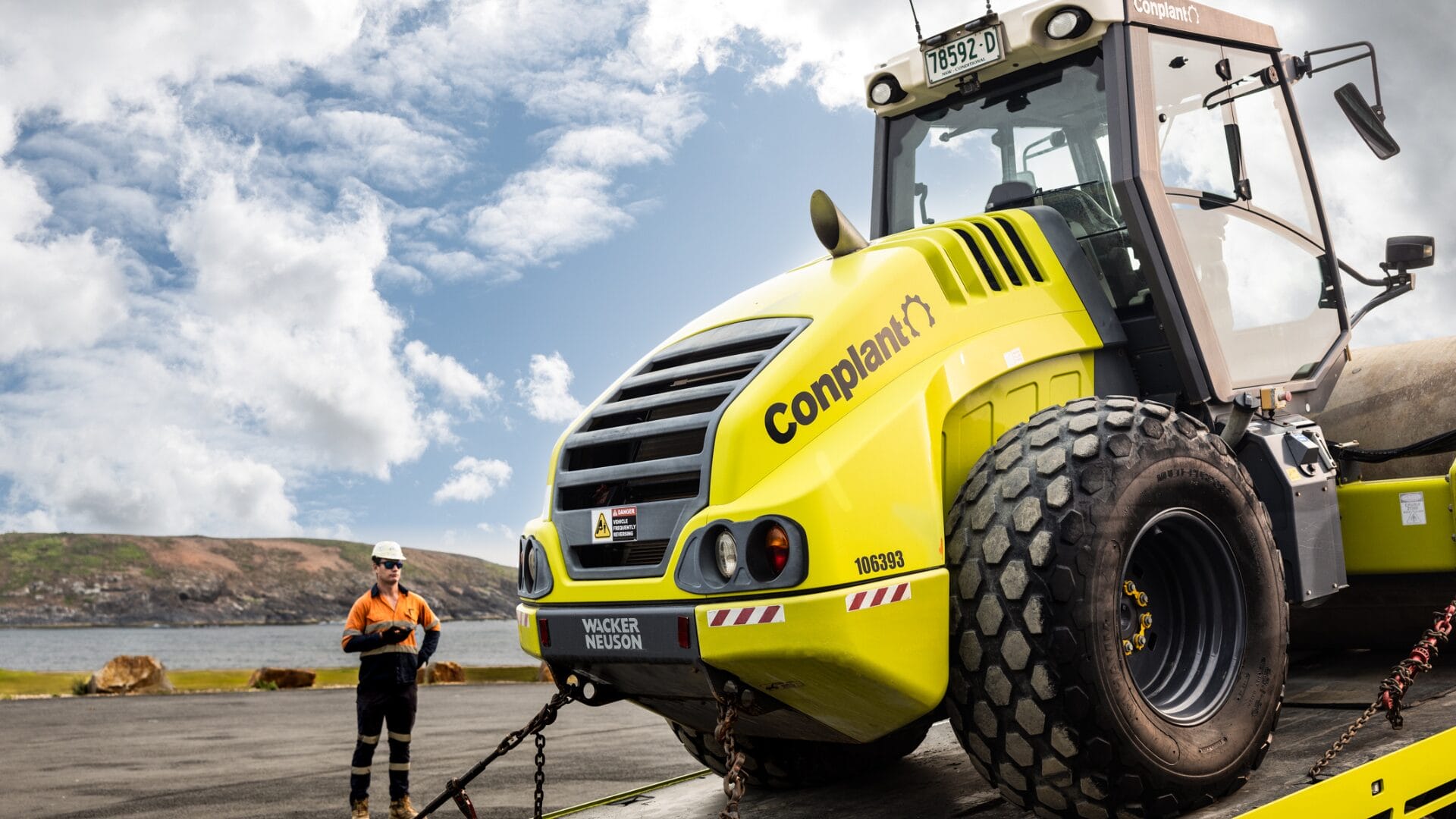Experience Quality Compaction with Oscillation Technology
With plenty of civil works taking place in noise sensitive or structurally sensitive areas, many construction companies are looking for alternatives that better suit the unique environment they are working in. An oscillating roller is one of the most effective options for delivering high quality compaction without the noise, vibration or structural risk associated with traditional methods.
There are several advantages to using oscillation compacting machinery over standard vibratory rollers, particularly if you are working in areas:
- Where sensitive remediation works are required
- Where there are underground essential services
- Or near bridges and railways
In these cases, you run less risk of damaging services, due to oscillation rollers not using a vibrating action. They also produce a lot less noise and there is a lower fuel burn on many soil types. The reduced noise profile makes oscillating rollers ideal for CBD work, night projects and residential areas, while the lower fuel use helps keep operating costs down.
So, is an oscillating roller the best compactor for you? Let’s explore how oscillation technology works and why it’s becoming the preferred choice for many civil contractors.

The difference between Vibratory Rollers and Oscillation Rollers
One of the big downsides to vibratory rollers is the risk of over compaction. To overcome this challenge, oscillation rollers were invented in Germany back in 1983. This shift in technology allowed for less energy transfer into surrounding structures and the infrastructure below the layer being worked on, while still delivering a consistent and reliable compaction result.
What does this mean for you? You achieve a better finish with fewer disruptions to the surrounding environment, and you can work confidently over sensitive ground conditions without the additional risk created by vibration.
So, what are the main differences between the two types of rollers?
In traditional vibratory rollers, a vibrating drum moves up and down, compacting the material through repeated impact. By comparison, an oscillating roller uses a rotational forward and backward motion created by two offset shafts inside the drum. Because the rotational movement keeps the drum in constant contact with the surface, compaction is faster, more uniform and typically requires fewer passes.
The forwards backwards movement allows the earth to be compacted through a massage like motion, redistributing particles in a non-aggressive manner. This produces an even surface over a greater distance with fewer irregularities and dramatically reduces the risk of structural damage or material breakdown.

Advantages of using Oscillation Rollers
We’ve already touched on some advantages of using Oscillation Rollers but there’s a long list of reasons why the civil construction industry is using them more often. Key benefits include:
- Less disturbance when working in built-up or sensitive areas
- Maintenance-free drums due to high wear resistant steel and temperature-resistant belts
- Lower fuel burn on selected sites
- Constant contact with the ground
- Cold compaction of joints without damaging the asphalt
- A better degree of compaction in less time
- Less occurrence of over-compaction
- Better performance in low temperature areas (can perform in a range of temperatures)
- Self-regulating so no constant adjustments taking up time
- Less vibration means more comfort to the driver and more protection to parts
- Environmentally friendly option
In short, an oscillating roller offers speed, safety and efficiency in conditions where a vibratory roller may be too aggressive.

When to use an Oscillation Roller
Oscillation offers a gentler compaction method, which means that these rollers are best used:
- In tight or smaller spaces
- Near bridges, railways, city utilities
- In city areas and during night works
Essentially, oscillation should be considered anywhere that requires reduced noise, reduced vibration and lower risk of damage. They are especially useful when working near older pipes, cables or underground services that could be compromised by traditional vibration.
Many operators will also use oscillation rollers in cooler areas or when working on joint compaction on asphalt roads, as oscillation presses material together rather than fracturing or crushing the joint like a vibratory roller might.
If your next civil construction job requires a more delicate touch, speak to the team at Conplant. We’ve been Australia’s leading compaction experts since 1961, so we know what works. Whether you need an oscillating roller for a specialised application or general compaction support, we’ll help you increase productivity, reduce downtime and deliver a higher quality finish.
Contact us on 1300 166 166 or pop into one of our branches to have a chat!

Frequently Asked Questions
An oscillating roller is a type of compaction roller that uses a rotational forward and backwards drum movement instead of vertical vibration. This constant ground contact produces uniform compaction with far less vibration, making it ideal for sensitive areas such as bridges, residential zones, underground services and night works. It delivers a smoother finish with reduced risk of structural damage.
A vibrating roller compacts material by using a drum that rapidly moves up and down, creating repeated impact force. This is effective for deep compaction and heavy-duty soil work, but the vibration can transfer into surrounding structures, increase noise levels and create a higher risk of over compaction, especially in built up or delicate environments.
The three most common rollers used in civil construction are:
1. Vibratory rollers, which compact material using vertical vibration.
2. Oscillating rollers, which compact using a gentler rotational motion.
3. Static rollers, which rely purely on the weight of the machine to compress material.
Each type has a specific role to play depending on the site conditions, material type and sensitivity of the surrounding environment.
The best roller depends entirely on the application. Vibratory rollers are ideal for heavy soils and deep layer compaction. Oscillating rollers are preferred in noise sensitive or structurally sensitive areas because they provide strong results with lower impact and reduced vibration. Static rollers are suited for finishing layers and light compaction. Many contractors use a combination of roller types to achieve the best overall result.



